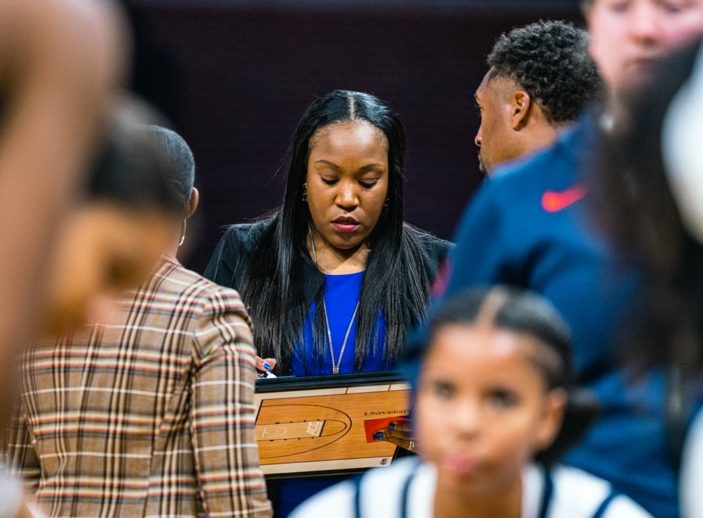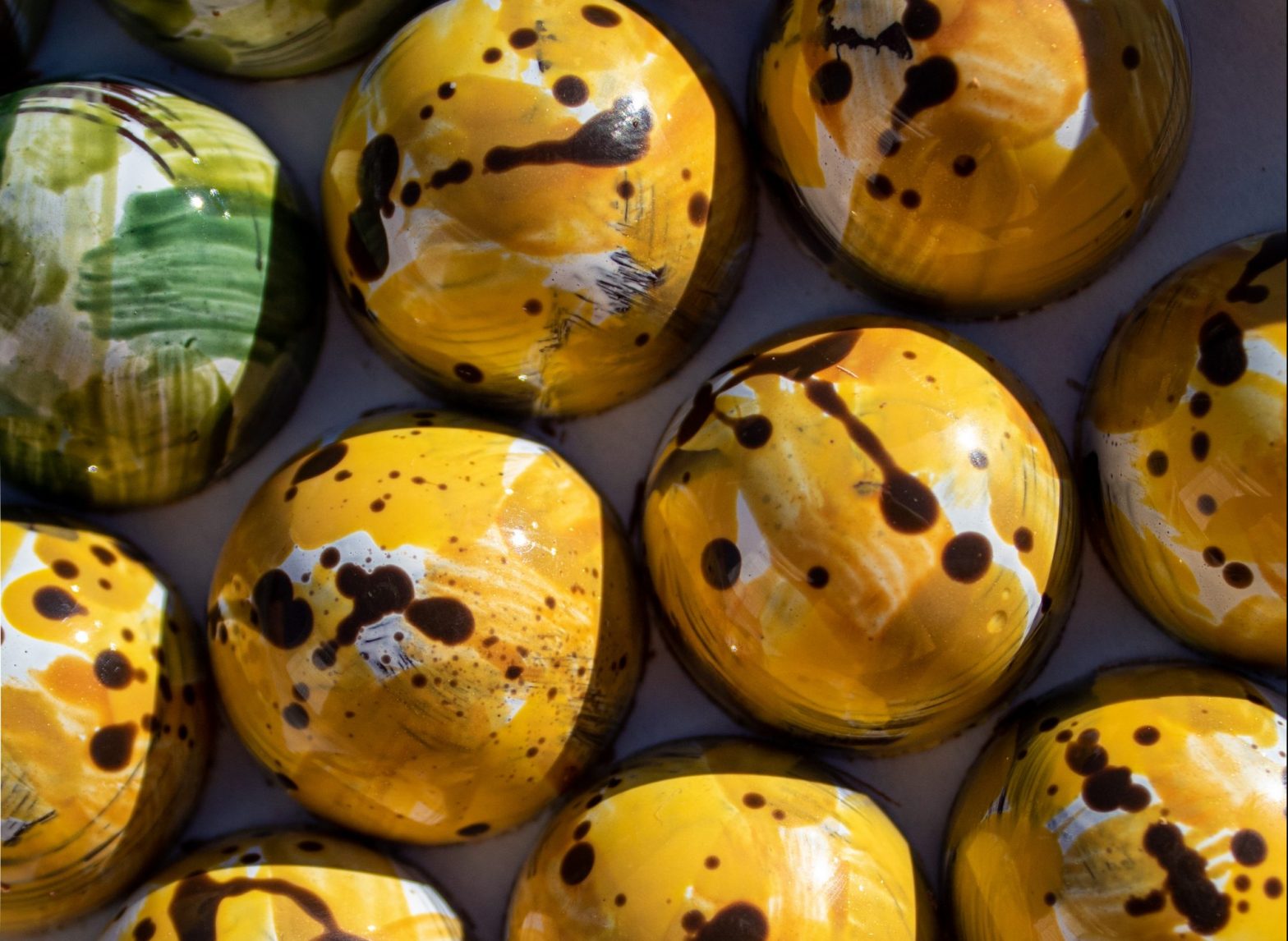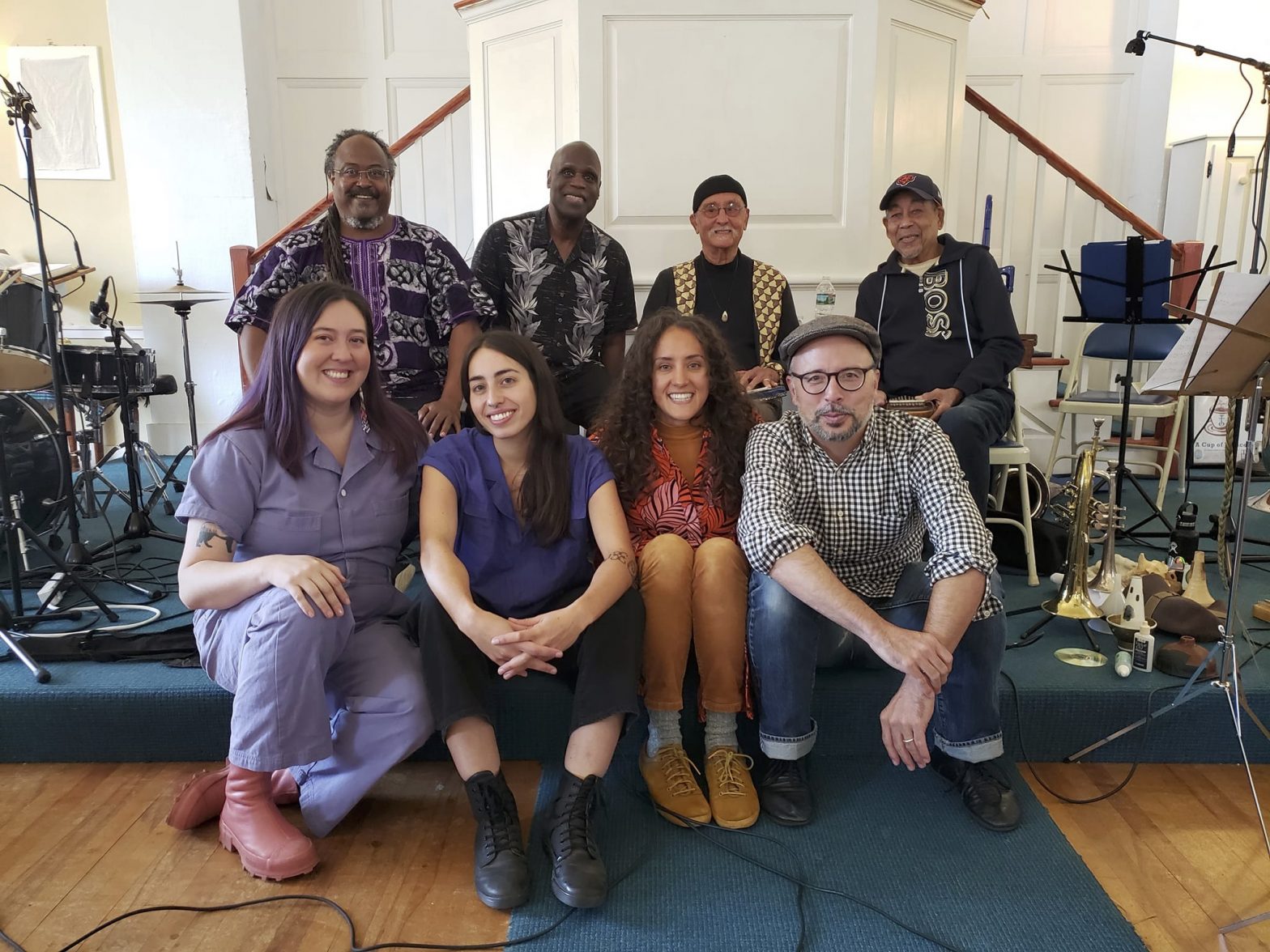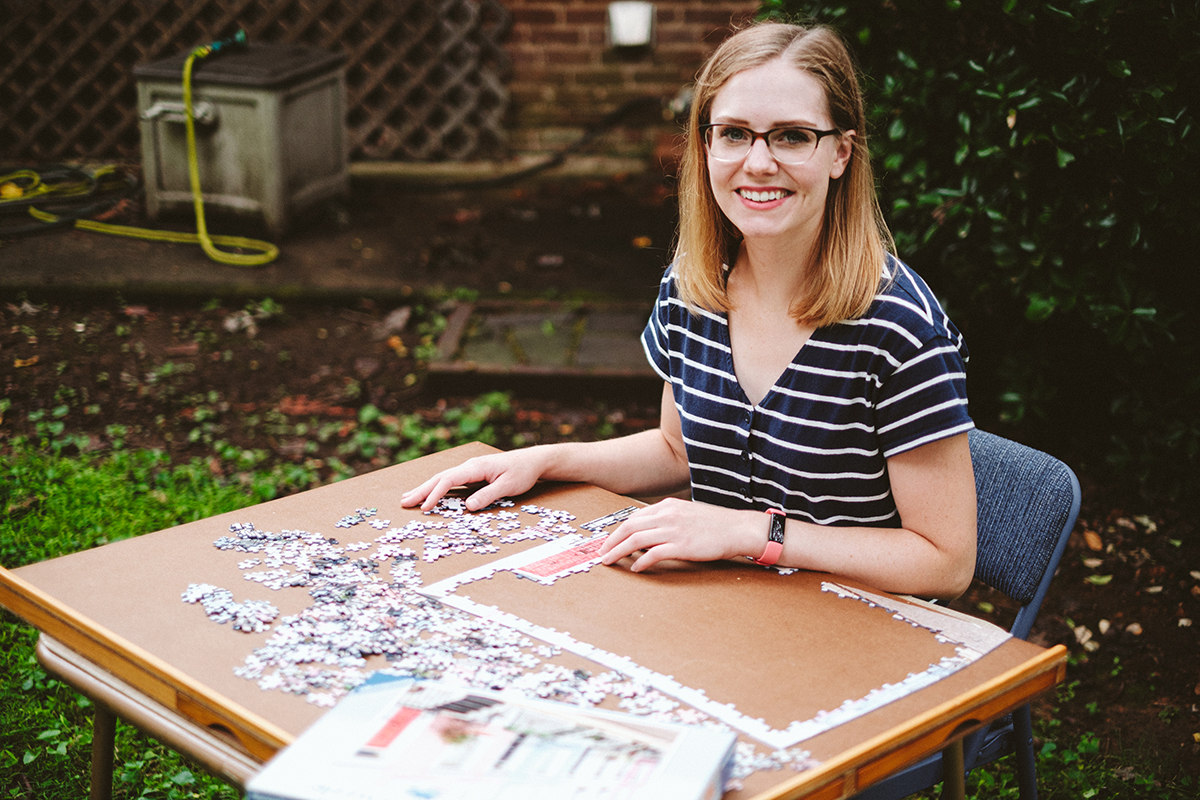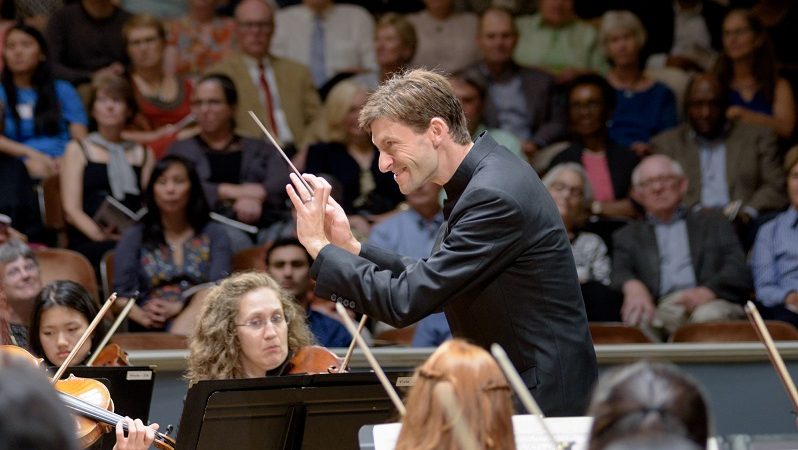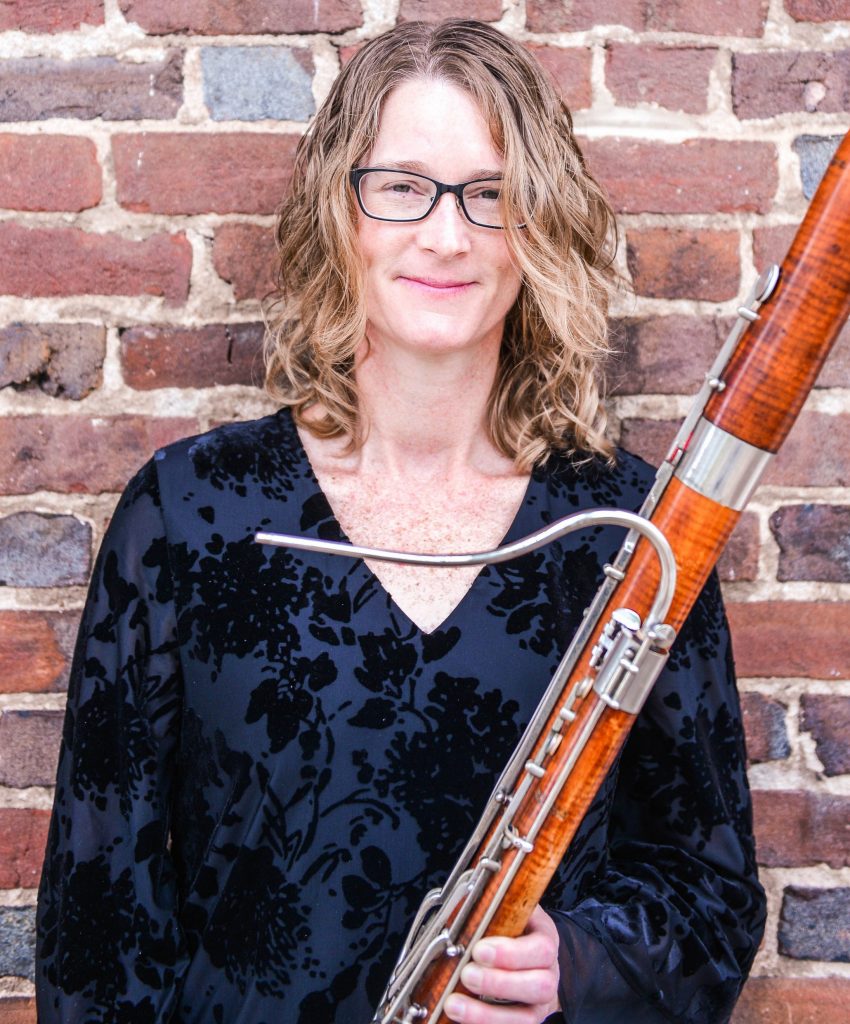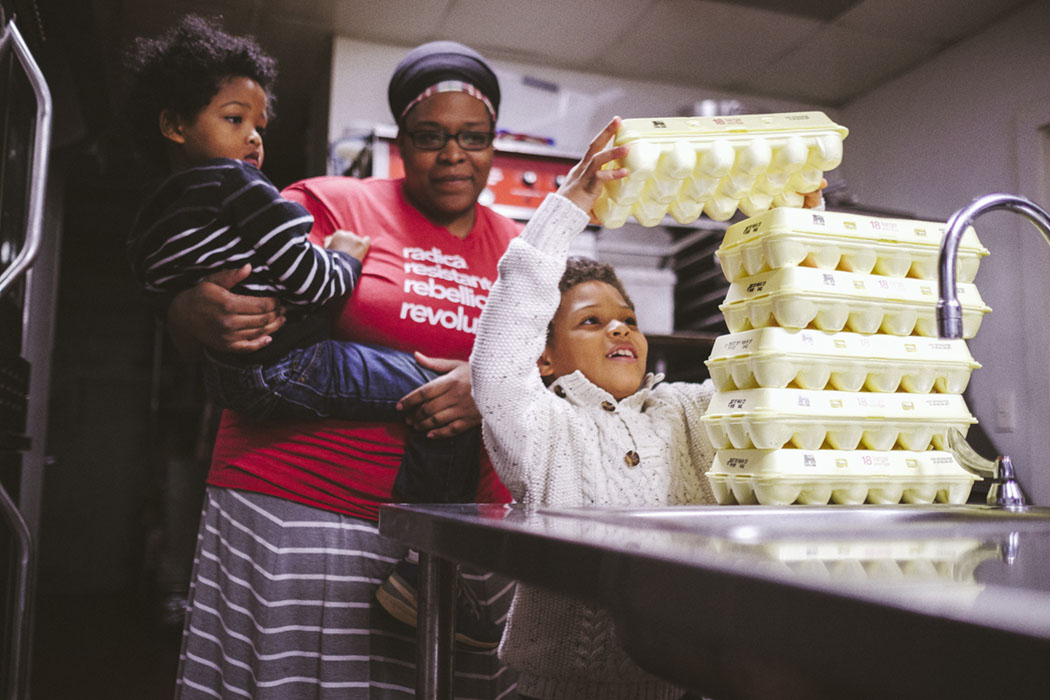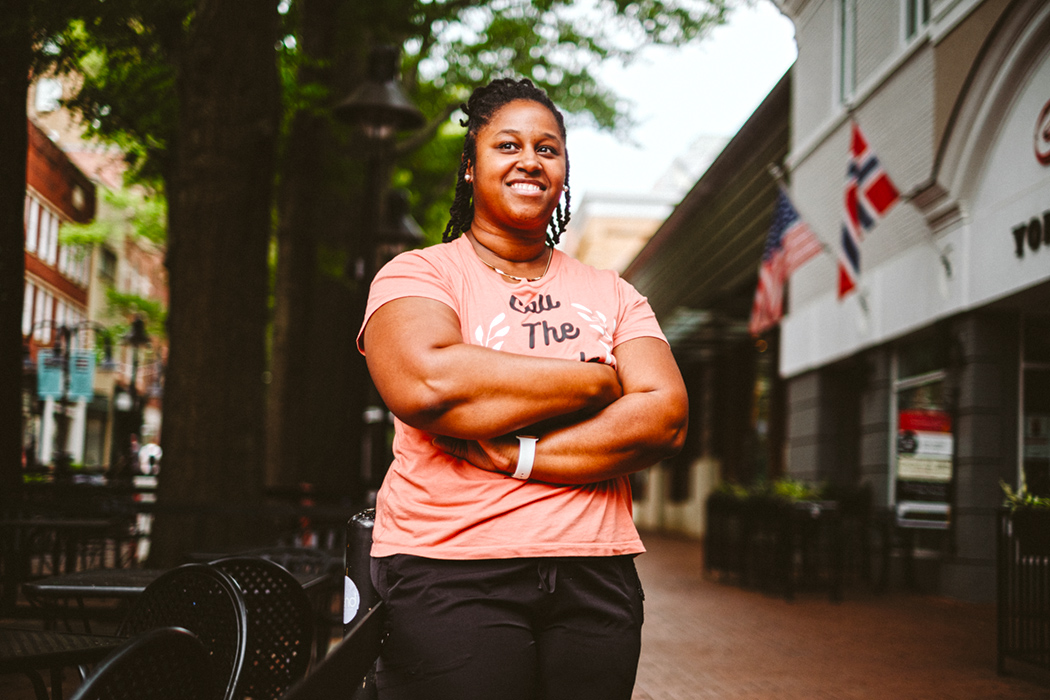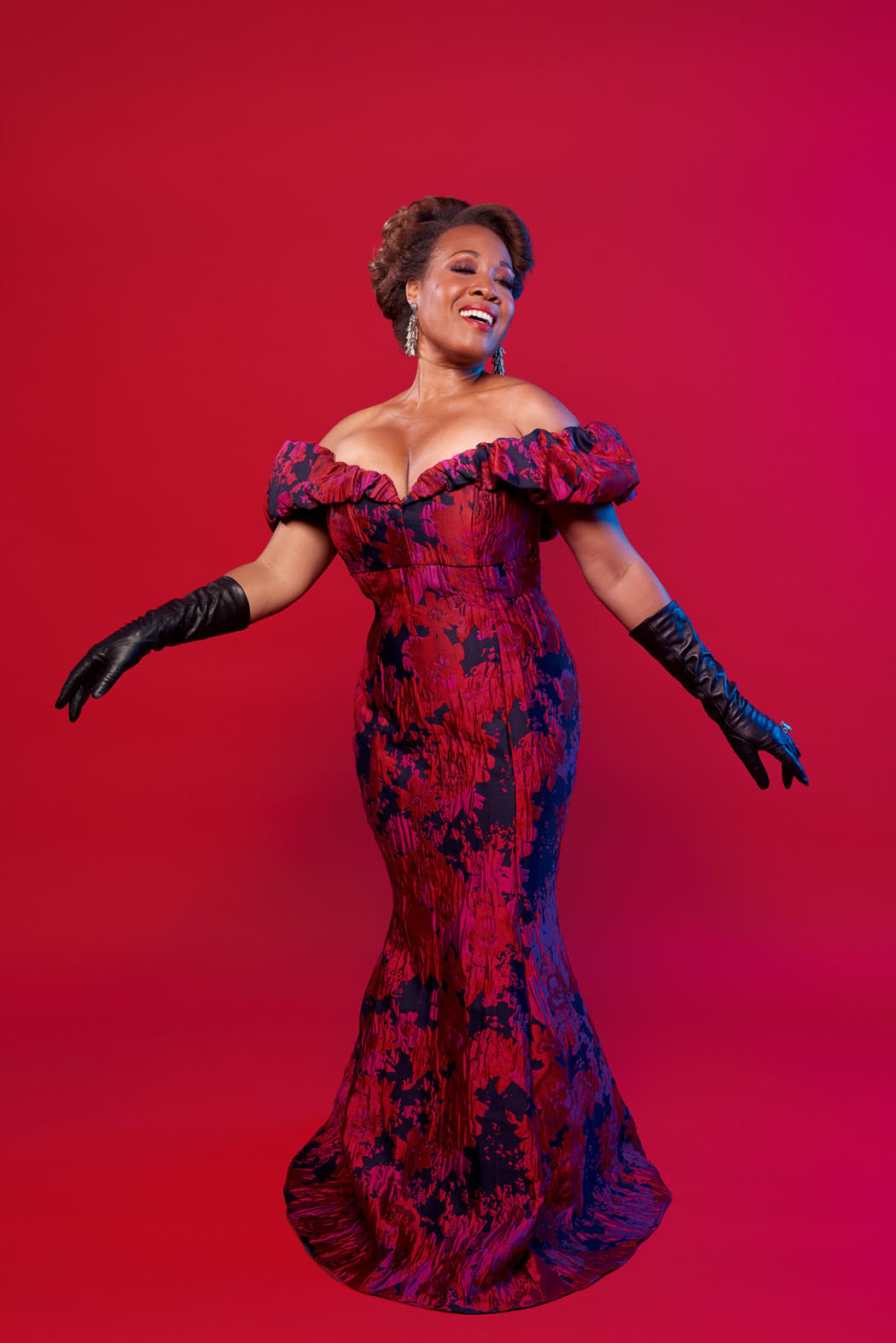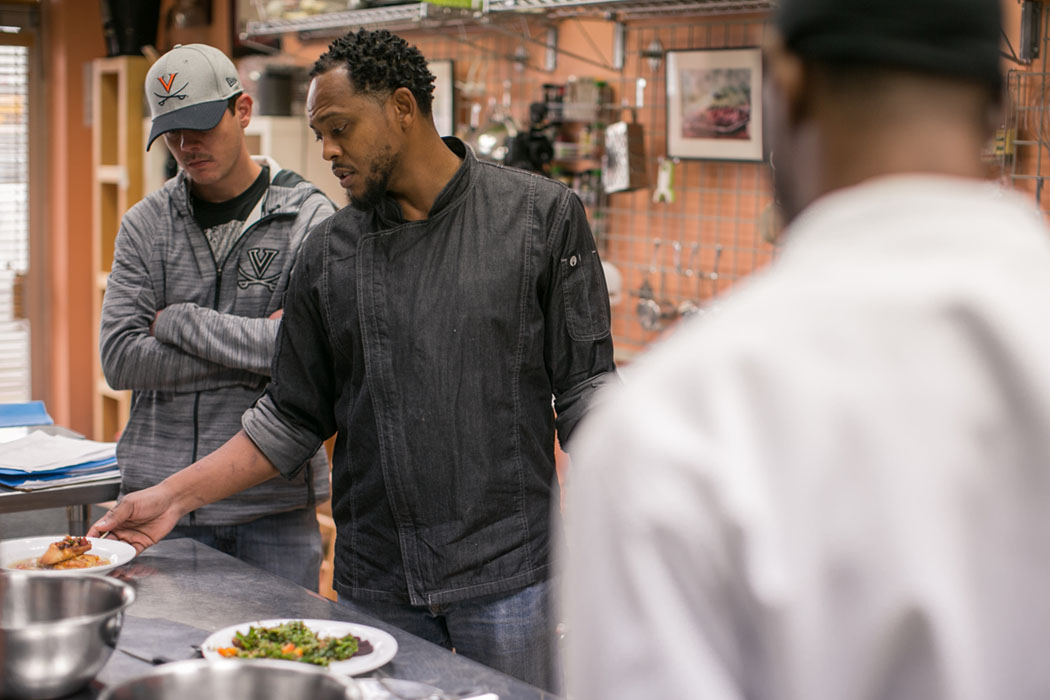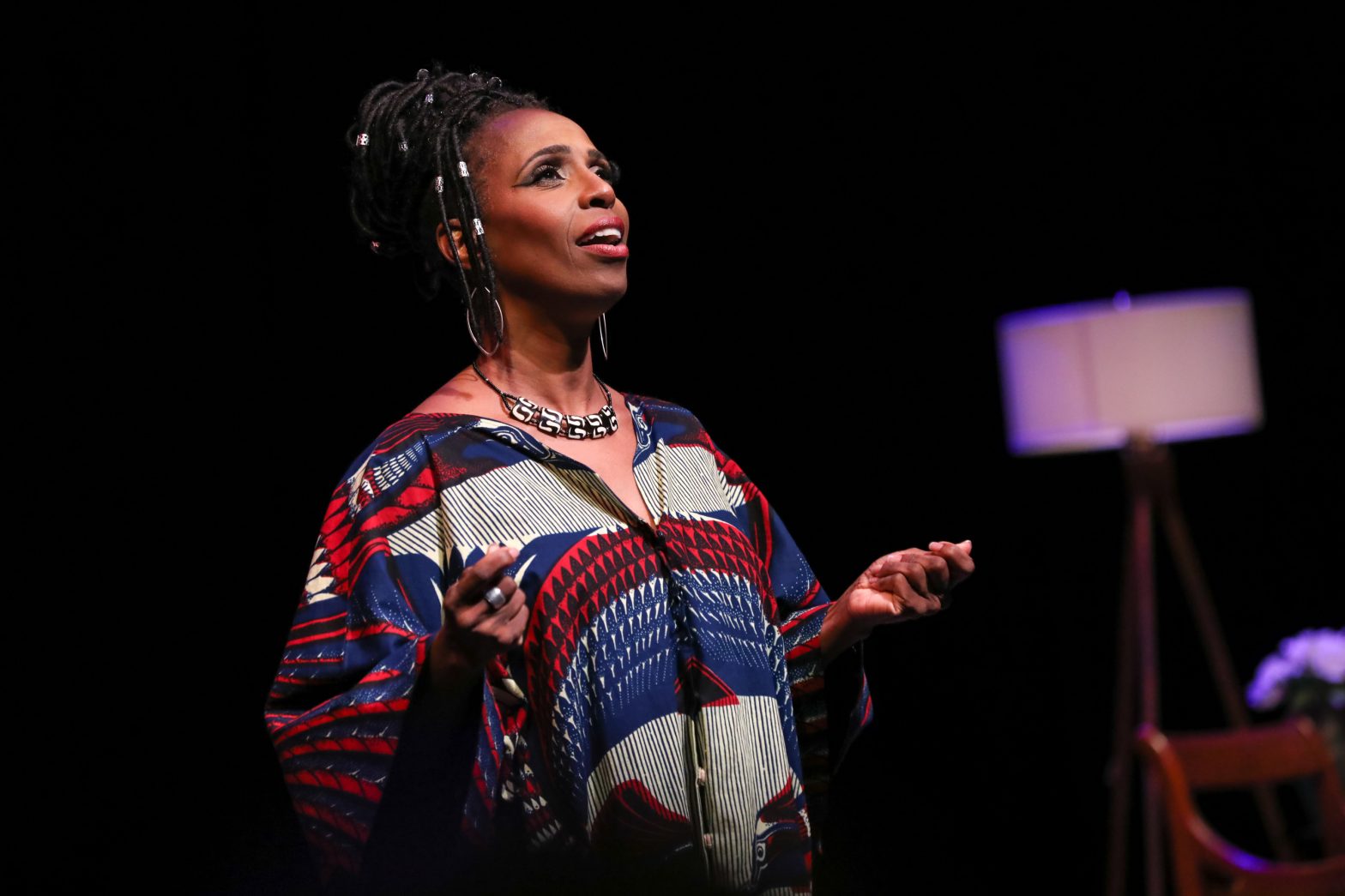When Amaka Agugua-Hamilton was growing up in Herndon, Virginia, she didn’t want to be a coach.
Long before she earned the nickname “Coach Mox” as an assistant coach at VCU, or recorded a historic inaugural season as head coach at Missouri State, or was named the sixth head coach of UVA’s women’s basketball in March, Agugua-Hamilton did not plan to be on the sidelines.
She wanted to be the first woman to play in the NBA.
Agugua-Hamilton saw herself in Charles Barkley, who muscled his way past players six inches taller to become one of the best rebounders in basketball history. At 5-foot-11-inches tall, she needed similar tenacity to earn a spot on a college roster. When she was accepted at Hofstra in the early 2000s, her dream—especially since the WNBA was founded—felt within reach.
Then, her knee gave out.
The injury sidelined her for the majority of her freshman season. She was considering transferring by the time Felisha Legette-Jack, now head coach at Syracuse, took over and shocked Agugua-Hamilton by naming her team captain as a sophomore.
“At first, I was like, ‘Are you sure? Me?’” says Agugua-Hamilton. “But she saw something in me, and it’s something that a lot of people had already brought to my attention, but I just didn’t really tap into it yet.”
Agugua-Hamilton’s injury troubles persisted throughout college. She fought through everything from stress fractures in her feet to sciatica in her back. One of her six knee surgeries forced Agugua-Hamilton to redshirt her senior year, so she spent it on the sidelines with the coaching staff.
“I started seeing how my teammates reacted to me,” says Agugua-Hamilton. “I got a lot of gratitude, and it filled me up, helping others and being a mentor to others. That’s where I started falling in love with coaching.”
Agugua-Hamilton received offers to play professionally overseas, but when her surgeon mother looked at scans of her daughter’s knees, she turned to Agugua-Hamilton and warned her she had to stop playing basketball if she ever wanted to be able to play with her kids.
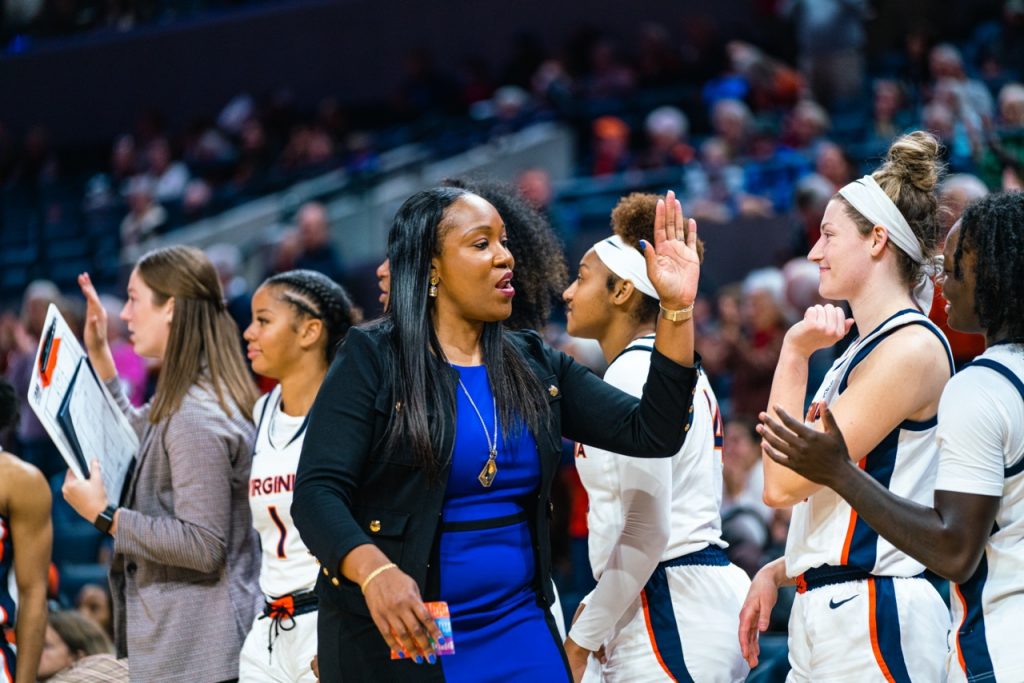
Into the thick of it
After honing her leadership skills with assistant coaching jobs at VCU, Indiana, and Old Dominion, Agugua-Hamilton worked her way up to associate head coach at Michigan State.
Then, in early 2017, head coach Suzy Merchant fainted on the sidelines during a game and took time off to recover. Suddenly, Agugua-Hamilton was an interim Big Ten coach in charge of everything from game planning to radio interviews. “My head was spinning for the first couple of weeks,” she says. “And then, I found a rhythm.”
This trial by fire ensured Agugua-Hamilton was ready two years later, when she was offered her first full-time head coaching position at Missouri State.
“People there told me, ‘You know, as a first-time head coach, it seems like this isn’t your first rodeo,’” she says. “And I think it’s all because of those experiences I had at Michigan State, so I’m grateful for that. I’m also grateful that Suzy’s in better health.”
Merchant, who still coaches Michigan State today, recovered and was able to attend Agugua-Hamilton’s wedding that May, when Agugua-Hamilton tied the knot on a romance that, like her career, blossomed beside a basketball court. She met her husband, Billy, at the San Antonio Final Four, while she was an assistant coach at Indiana and he was an assistant at Savannah State. The two now have a son—and with every lingering twinge of old injuries, Agugua-Hamilton remembers how close she came to not meeting him.
As Agugua-Hamilton prepared her family to move to Springfield in 2019, she knew she was headed for more than just her first head coaching gig. She was also getting ready to be the first African American woman coach in Missouri State history.
Some would have seen it as pressure. She saw it as an opportunity.
Her 26-4 record in 2019-20 marked the best inaugural season by a head coach in the history of the Missouri Valley Conference. “I’m a believer and a God-fearing woman, and I truly believe I was called there,” says Agugua-Hamilton. “It’s a community that’s more of a conservative community, and maybe I was able to open some closed eyes.”
Despite the heartbreak of that first promising postseason being lost to COVID-19, Agugua-Hamilton returned to lead the Lady Bears to a 16-0 conference record and the NCAA Sweet 16 in 2020-21. She hopes her legacy will not be just that she broke racial barriers, but that she excelled at her job while doing so.
“At the end of the day, I do want to represent my community, and I want to make sure women of color have a platform and get more opportunities to get jobs, and to lead, and to help grow the next generation,” says Agugua-Hamilton. “But at some point, I just want to be known as a great coach, no matter what my skin color is.”
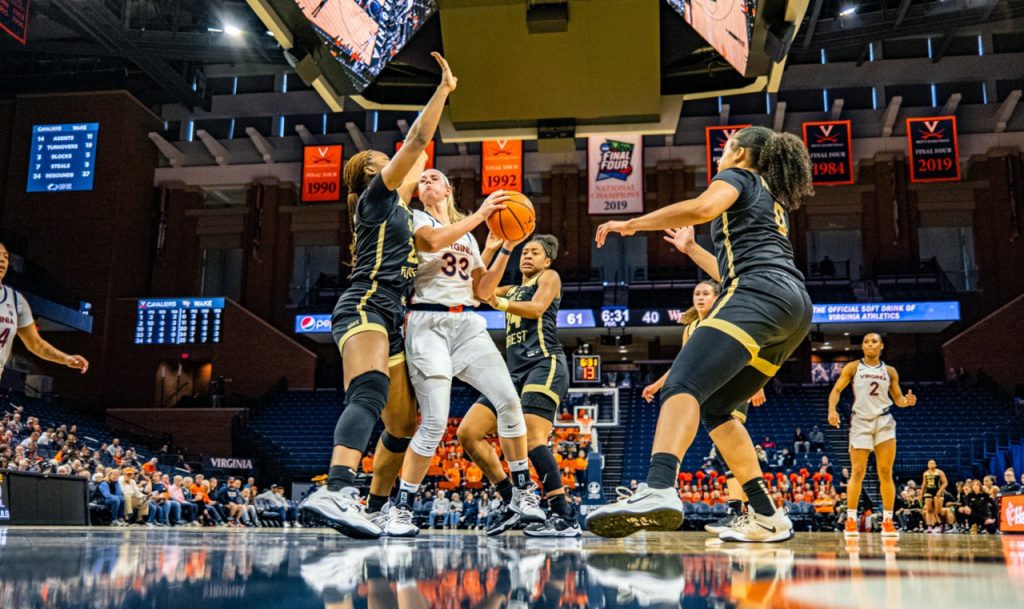
Coming home
UVA athletic director Carla Williams was part of the coaching staff that took Georgia to two Final Fours and the 1996 NCAA championship, so she knows what a good coach looks like. And she knew she’d found one in Agugua-Hamilton during their first Zoom call.
“Coach Mox talked about academics first, and developing young ladies off the court first,” says Williams. “Once I realized how passionate she was about their lives outside of basketball, I already knew she was a great coach.”
When Williams extended the offer to coach at UVA, Agugua-Hamilton jumped at the chance to move her son and husband closer to extended family—and also to make the leap from mid-majors to the ACC.
It took her just two weeks to secure a high-profile commitment from Notre Dame transfer Sam Brunelle. After leading ACC freshman in scoring in 2019-20, Brunelle’s next two seasons were cut short by injuries, the last of which required intensive surgery last summer. Agugua-Hamilton and her staff have helped Brunelle through the agonizing process of relearning how to use her healing shoulder.
“I’m one of those coaches that holds kids out a little bit to make sure that they’re prepared to come back physically, but also mentally,” says Agugua-Hamilton. “Coming back from injuries is really taxing on the mental side, and that sometimes is overlooked.”
This guidance is part of why Brunelle, who first met Agugua-Hamilton as the former No. 1 overall high school recruit out of Greene County’s William Monroe High School, says Virginia’s new coach played a major role in her transfer decision. “Coach Mox has been through it as well, with her knee injuries, and she really understands where I’m coming from with the adversity I’ve had to face,” says Brunelle. “It’s really nice to have someone who understands that in the forefront of helping you with rehab.”
Last year, Virginia women’s basketball missed the NCAA tournament for the fourth straight year after winning just five of 27 games.
That’s not the UVA Agugua-Hamilton remembers while watching coach Debbie Ryan and Dawn Staley, Wendy Palmer, and Tammi Reiss play in orange and navy blue.
“I understand the program kind of went on a downward spiral the last couple of years, but my vision of this program is the Final Fours, the Elite Eights, because that’s what I grew up knowing about UVA,” says Agugua-Hamilton.
The first thing she wanted to do to jolt the Cavaliers out of this spiral was change the team culture, which she found was easier than expected. “I think I was a little bit surprised with how hard we work, and how competitive we have been from day one of getting on the court with them,” says Agugua-Hamilton. “I thought that was going to be something that I was going to have to change a little bit, just based on last year. But our kids want to win, and they work hard.”
With family culture in place, Agugua-Hamilton can focus on emphasizing her players’ versatility and athleticism with up-tempo basketball. Alongside the bulk of her Missouri State coaching staff, she pushes her seven returnees, two transfers, and two first-years through energetic practices.
Shooters rotate briskly around the floor. Defensive drills are frenetic. Agugua-Hamilton is readying her players to push the ball.
Whenever Williams stops by practice, she sees joy in everyone’s face, even through the pain. “We’ve got a long way to go, but we’ve come a long way,” says Williams. “I think that she is exactly what college athletics, women’s basketball, and UVA athletics needs, and that’s a coach who cares about the student athlete outside of their sport and is truly invested in their development as people.”
